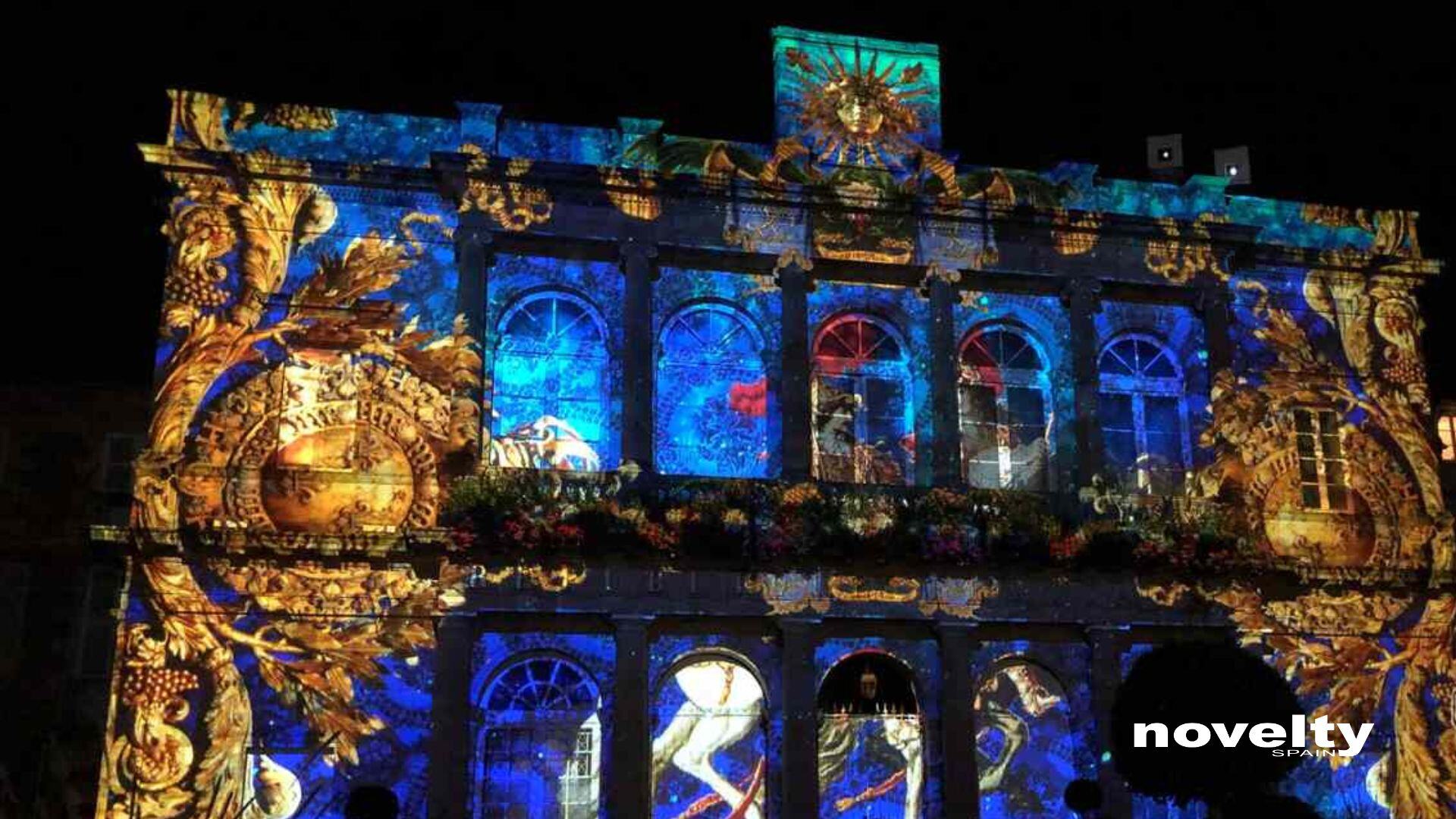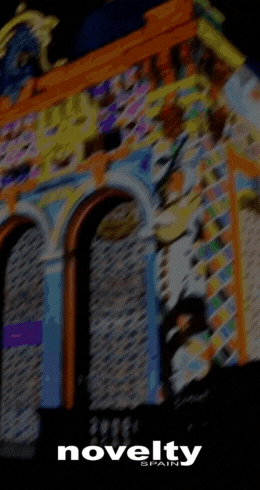Dushow Spain is now Novelty Spain
What is video mapping for events? Customize your venue with 3D projections
Projections in 2D, like videos and presentations, have long been commonplace at events. But the use of 3D projection technology, popularly known as video mapping, has risen in recent years thanks to the spectacular results it can generate.
Want to know more about video mapping? What are the benefits it can bring? How can it be used at your event? Keep reading to find out.
What does video mapping involve, and how is it used in the event world?
Video mapping is a 3D project technique that empowers you to create spectacular virtual stages and immersive experiences using a broad array of physical structures, from a wall or monument, to a building or the entire interior of a room. Any surface can become a projection screen.
The use of this advanced technology enables you to turn everyday objects into interactive 3D screens. With the use of dynamic virtual reality renders, you can turn a white wall into a space full of light, shapes, colours, textures and anything else you can imagine. You can even recreate entire atmospheres: from a forest, to flights of fancy. Simply put: there are no limits.
Using video mapping at your event creates a unique, surprising experience for attendees. Imagine walking into a place that, at first glance, looks sombre. But then, it transitions, and you find yourself enveloped in dazzling scenery that changes in real time. A growing number of organizers are using it as a powerful resource that gives excellent results.
How do 3D projections work?
Video mapping projections are technically complex and entail a number of different factors, such as the object you are going to project on, the lighting situation, perspective, whether the activity is outdoors, etc. In short, it is a complex process made up of several discrete phases.
- Scanning and 3D mapping: first, the physical space where the projection will be made, such as the façade of a building, is mapped. To do it, a 3D laser scanner is used to “virtualize” and create a richly detailed 3D map.
- Processing and modelling: once all of the points have been gathered, the next step is modelling with a 3D design programme. This is an essential step in creating a 3D model of the project object, considering the perspective of the audience.
- Content creation: once you are fully familiar with the surface where the 3D projection is to be made, you can create your personalized content. That involves using powerful video mapping software that features all the necessary tools.
- Adjustments and testing: the last steps entail bringing the two parts together to ensure that everything is a perfect fit. This is not only done virtually. It will also be necessary to carry out a test on the actual stage a few days prior to the event.
What advantages does video mapping bring to events?
Although creating this type of scenarios can be complex and costly, it does in fact bring about many advantages for attendees and organizers alike. Some of the most relevant ones are:
- It creates unique scenarios to offer your audience an immersive, surprising experience.
- Video mapping can be used in an interactive way.
- Attendees will participate and network more, in addition to being more likely to share the experience on social media.
- This means increasing the reach of your event, and with it, the value of your brand.
- You can also use it for marketing and advertising purposes, to improve your event’s ROI.
Video mapping: How to decide whether to include it in your next event
As you may imagine, video mapping is neither cheap nor simple. But a well-made 3D project will definitely be a piece of advertising difficult to match. So how can you decide if this is what you’re really looking for? Here are a few ideas to help you draw your own conclusions.
Budget
Without a doubt, this is the key issue. You will not only need the technological resources, you’ll also have to contract the technical staffers. If you have a tight budget, you can choose a more modest 3D projection, or one that only focuses on a few key items. If you have a bigger budget and believe that video mapping fits your view of the event, don’t think twice about looking into this option.
Space
How big is the venue where the event is to be held? Does it meet your needs? Remember: the bigger the space, the higher the costs. Also remember the spaces you want to highlight, or the properties of the surfaces (above all, when it comes to lighting).
Content
Creating the video mapping content is definitely one of the most complex parts of the process although, at times, you don’t need to create spectacular content. Being clever and creative is all it takes.
Time
Video mapping is a complex process that takes time to do properly. If you want good results, plan ahead, or schedule it for the next running of your event.
If you decide to have video mapping at your event, don’t forget to use the best-suited KPI’s to measure the success of this spectacular strategy, and combine it with live streaming to expand your event’s reach. We hope that this information has been useful for you, and that you decide to try 3D projection at your next event.
This article was first published in Novelty Spain, you can read the original Spanish version here.





